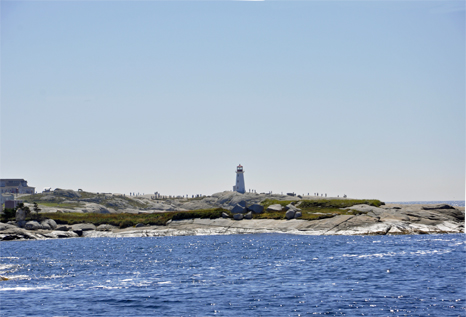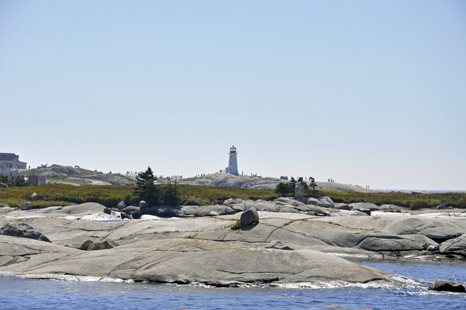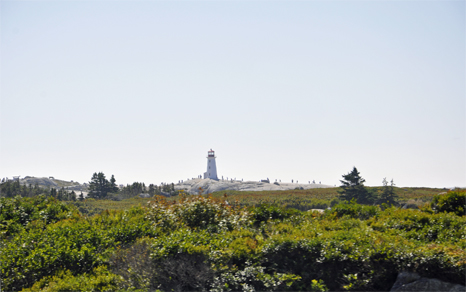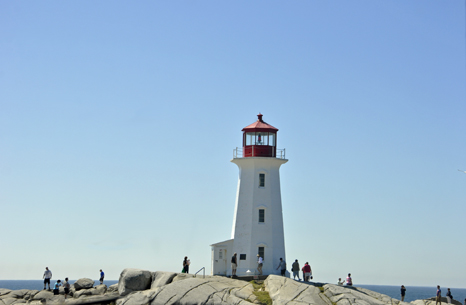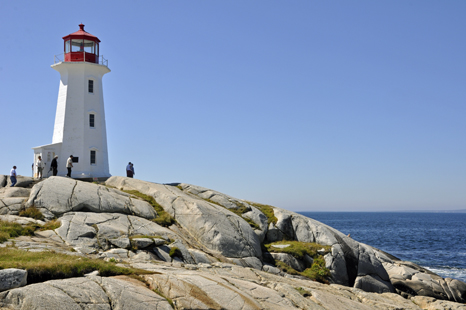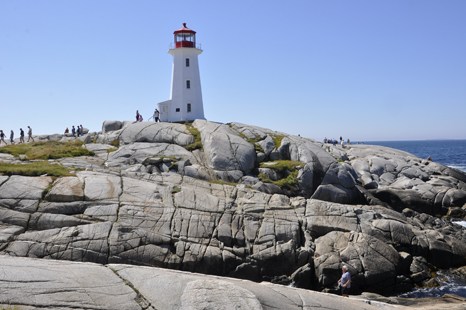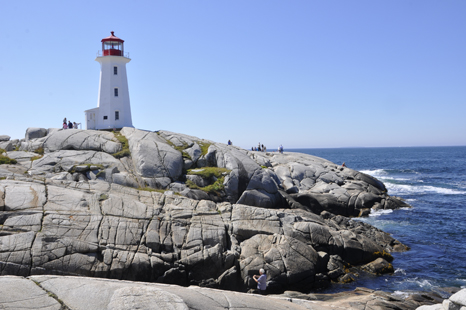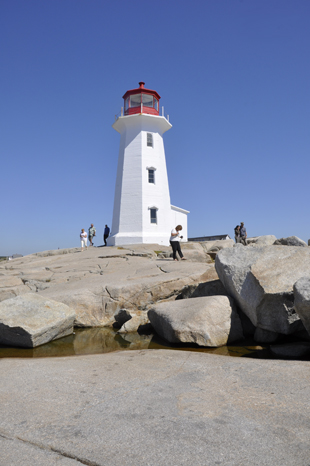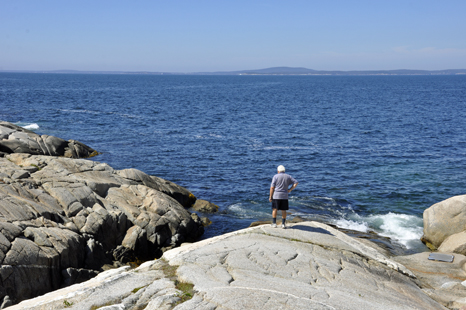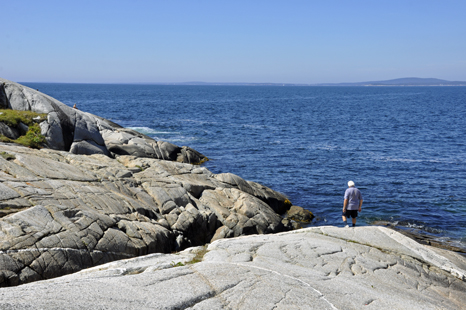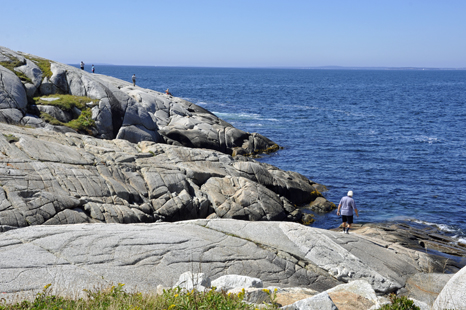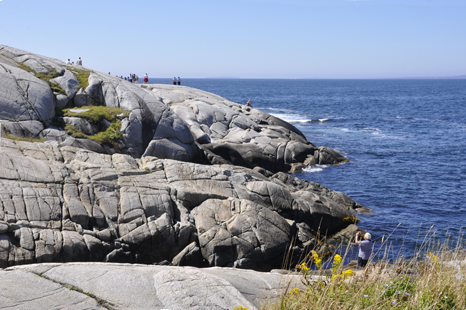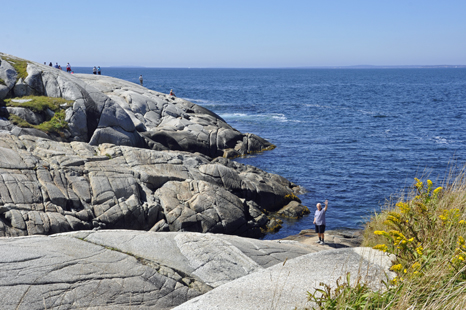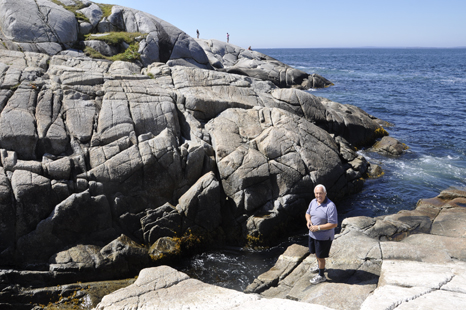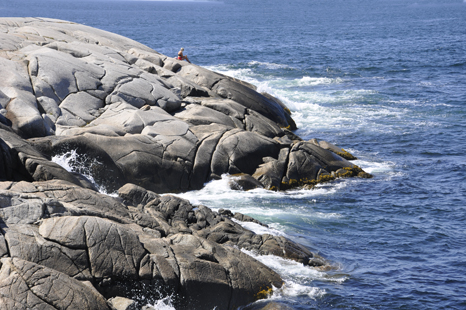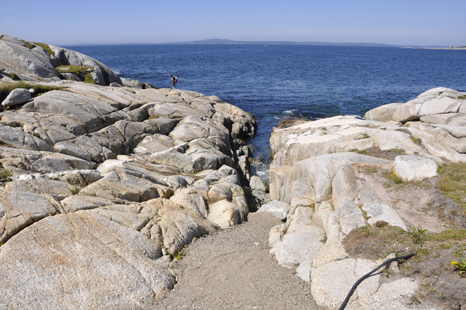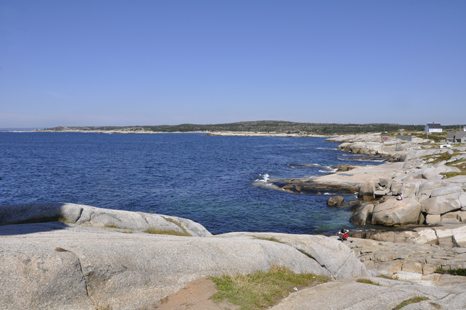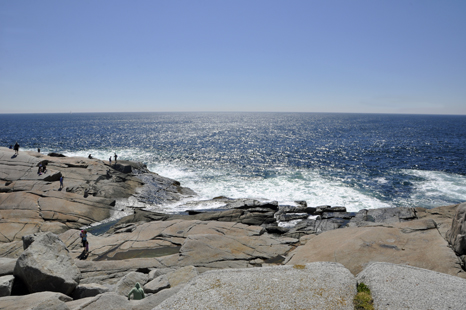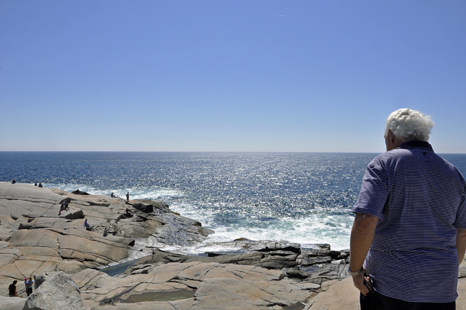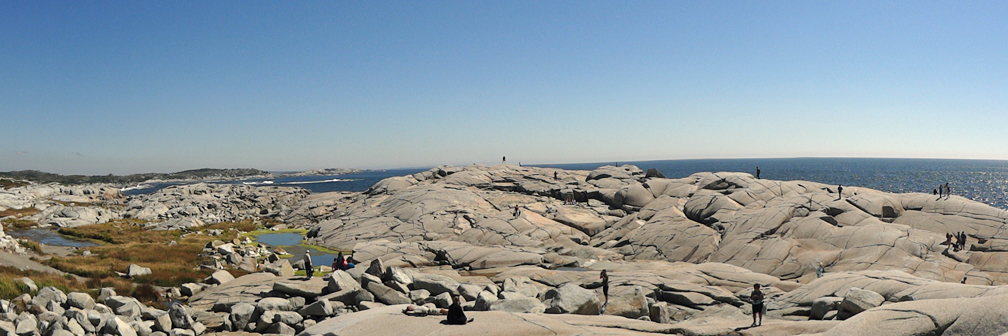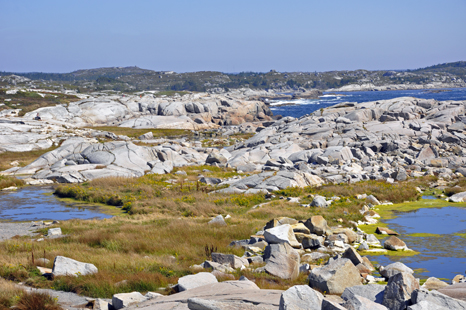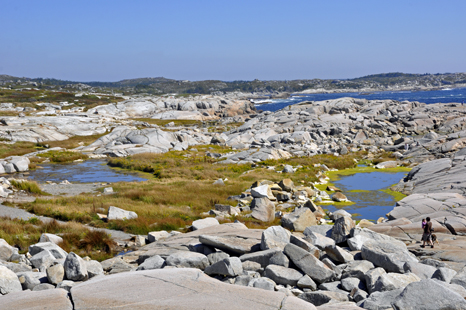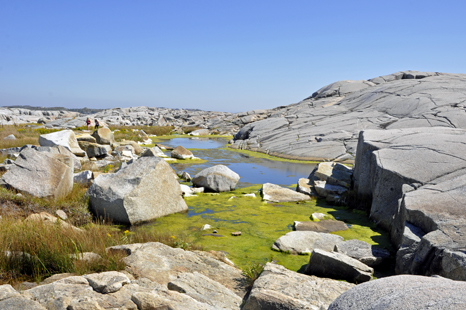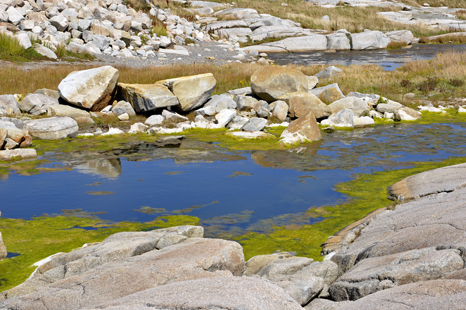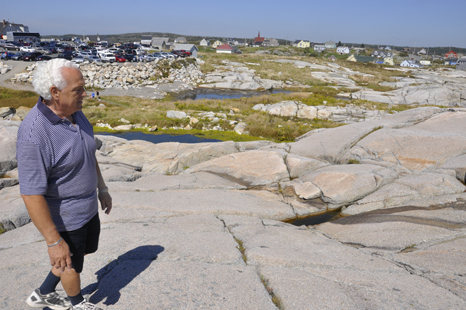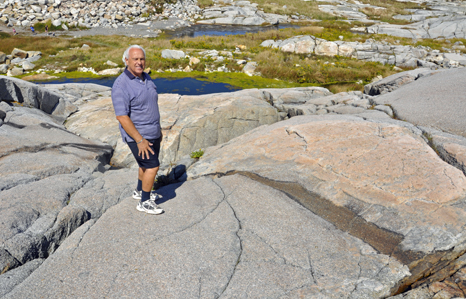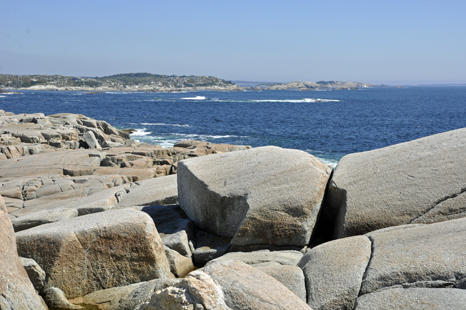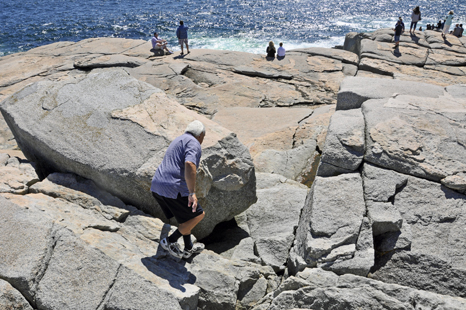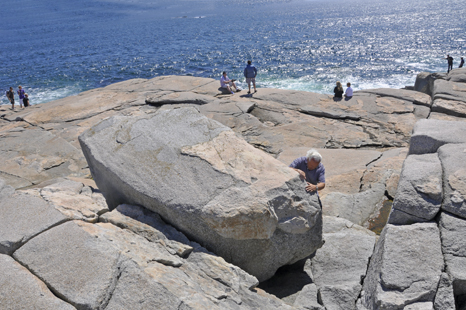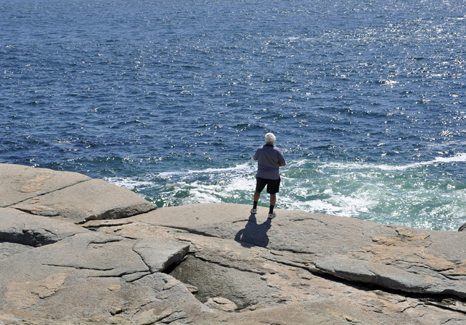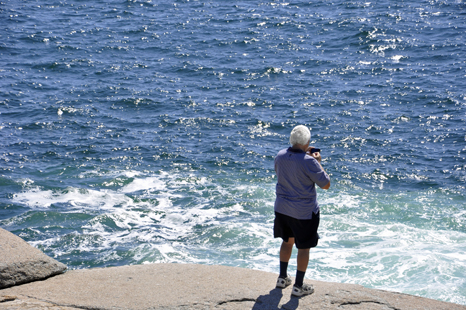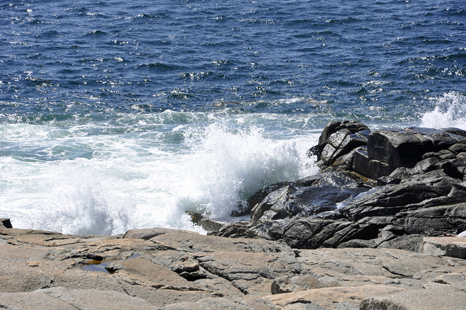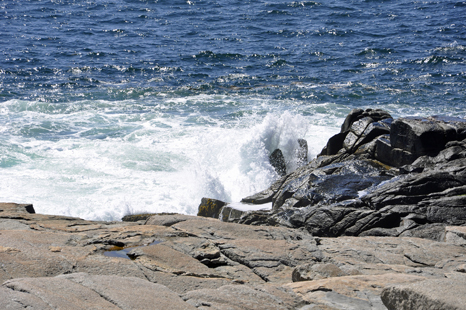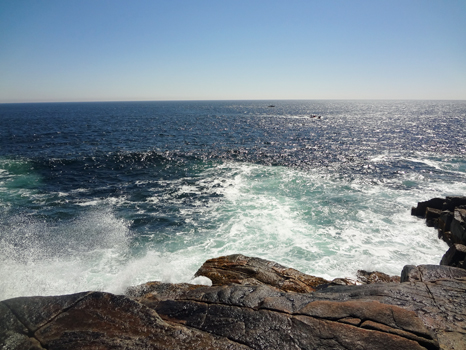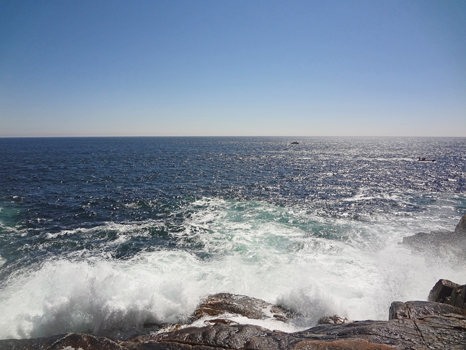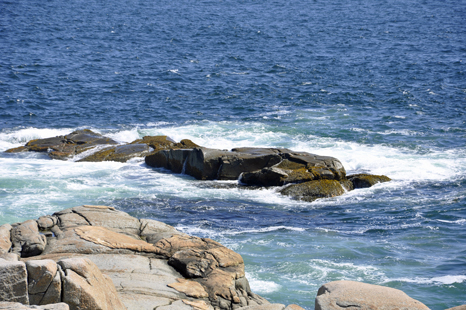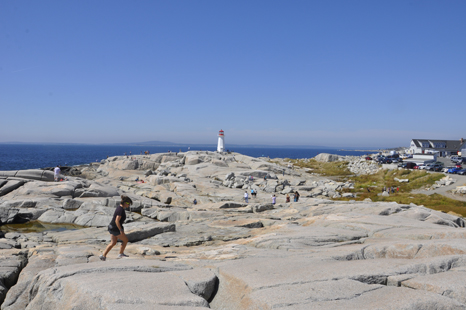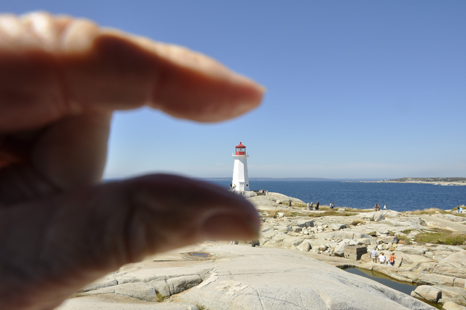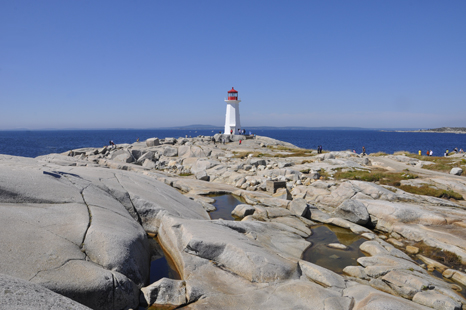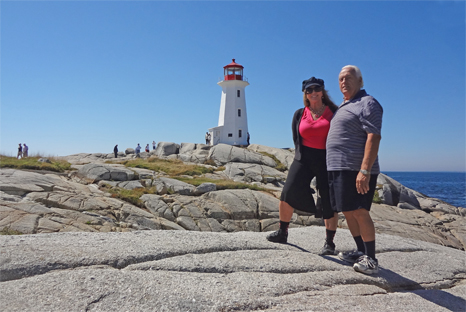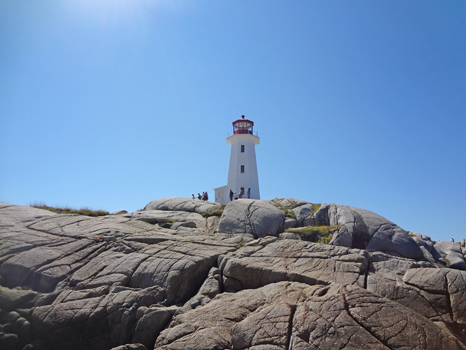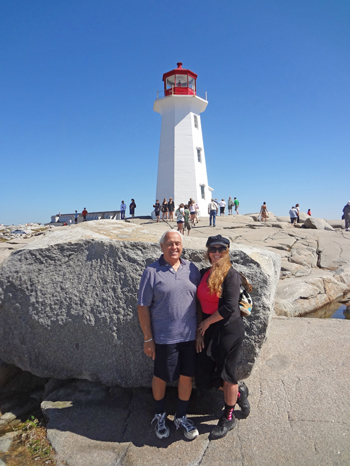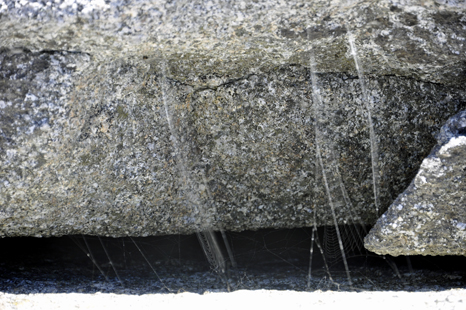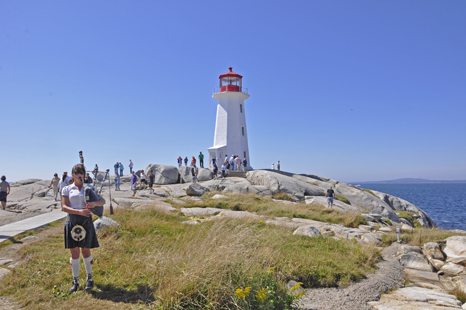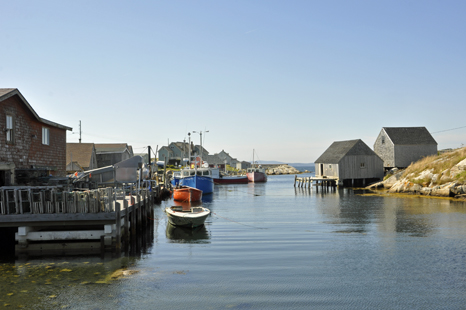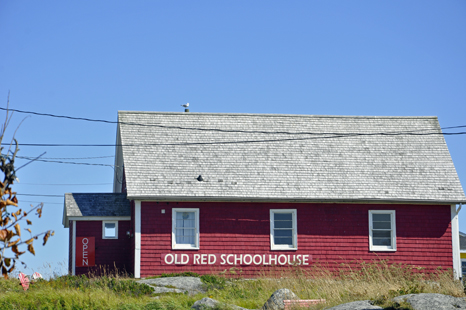|
Peggy's
Cove is one of the busiest tourist attractions in Nova Scotia and is a
prime attraction on the Lighthouse Trail scenic drive. The community's
famous lighthouse marks the eastern entrance of St. Margarets Bay and
is officially known as the Peggy's Point Lighthouse. |
|
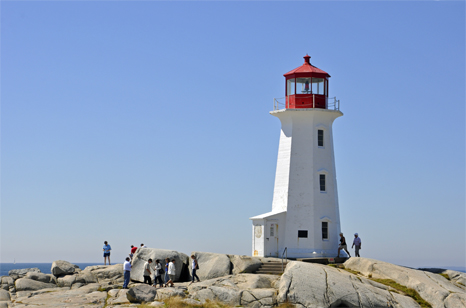
|
Peggy's
Cove has a classic red-and-white lighthouse still operated by the Canadian
Coast Guard. The light station is situated on an extensive granite outcrop
at Peggy's Point, immediately south of the village and its cove. This lighthouse
is one of the most-photographed structures in Atlantic Canada and one of
the most recognizable lighthouses in the world. |
|  The
first lighthouse at Peggy's Cove was built in 1868 and was a wooden house
with a beacon on the roof. At sundown the keeper lit a kerosene oil lamp
magnified by a catoptric reflector (a silver-plated mirror) creating the
red beacon light marking the eastern entrance to St. Margarets Bay. That
lighthouse was replaced by the current structure, an octagonal lighthouse
which was built in 1914. It is made of reinforced concrete but retains
the eight-sided shape of earlier generations of wooden light towers. It
stands almost 50 feet high. The old wooden lighthouse became the keeper’s
dwelling and remained near to the current lighthouse until it was damaged
by Hurricane Edna in 1954 and was removed. The lighthouse was automated
in 1958. Since then, the red light was changed to white light, then to
a green light in the late 1970s. Finally to conform to world standards
the light was changed to red in 2007. The
first lighthouse at Peggy's Cove was built in 1868 and was a wooden house
with a beacon on the roof. At sundown the keeper lit a kerosene oil lamp
magnified by a catoptric reflector (a silver-plated mirror) creating the
red beacon light marking the eastern entrance to St. Margarets Bay. That
lighthouse was replaced by the current structure, an octagonal lighthouse
which was built in 1914. It is made of reinforced concrete but retains
the eight-sided shape of earlier generations of wooden light towers. It
stands almost 50 feet high. The old wooden lighthouse became the keeper’s
dwelling and remained near to the current lighthouse until it was damaged
by Hurricane Edna in 1954 and was removed. The lighthouse was automated
in 1958. Since then, the red light was changed to white light, then to
a green light in the late 1970s. Finally to conform to world standards
the light was changed to red in 2007.
The lighthouse used to contain a small Canada Post office
in the lower level during the summer months serving as the village post
office where visitors could send postcards and letters. Each piece of
mail received a special cancellation mark in the shape of the lighthouse.
However Canada Post closed the lighthouse post office in November 2009
citing mold growth as a safety hazard. |
| Below are
more photos of the Lighthouse at Peggy's Cove followed by the amazing granite
outcrop of boulders plus the Atlantic Ocean. |
|
|
|
|
|
|
|
|
| The two
RV Gypsies carefully explored the granite outcrop on Peggy's Point around
the lighthouse. There are numerous signs warning of unpredictable surf (including
one on a bronze plaque on the lighthouse itself). Several incautious visitors
each year are swept off the rocks by waves, sometimes drowning. |
|
|
|
|
|
|
|
|
|
|
|
|
|
|
Below:
This area was especially colorful |
|
|
|
|
|
|
|
|
Below: Lee Duquette decided to get closer to the Atlantic
Ocean, yet he kept at a safe distance.
|
|
|
|
|
The
Atlantic tide runs about 4 to 6 feet. The ocean temperature ranges between
50 to 60 degrees Fahrenheit in the summer and falls to between 33 to 40
degrees Fahrenheit in the winter. The ocean moderates the air temperature
over the land year round. |
|
|
|
|
|
| Below:
More views of the Lighthouse at Peggy's Cove |
|
|
|
|
|
|
| The two RV
Gypsies noticed cobwebs between the rocks |
Below:
A Lady playing bagpipes |
|
|
| Today, Peggy's Cove is primarily
a tourist attraction, although its inhabitants still fish for lobster, and
the community maintains a rustic undeveloped appearance |
|
|




 The
first lighthouse at Peggy's Cove was built in 1868 and was a wooden house
with a beacon on the roof. At sundown the keeper lit a kerosene oil lamp
magnified by a catoptric reflector (a silver-plated mirror) creating the
red beacon light marking the eastern entrance to St. Margarets Bay. That
lighthouse was replaced by the current structure, an octagonal lighthouse
which was built in 1914. It is made of reinforced concrete but retains
the eight-sided shape of earlier generations of wooden light towers. It
stands almost 50 feet high. The old wooden lighthouse became the keeper’s
dwelling and remained near to the current lighthouse until it was damaged
by Hurricane Edna in 1954 and was removed. The lighthouse was automated
in 1958. Since then, the red light was changed to white light, then to
a green light in the late 1970s. Finally to conform to world standards
the light was changed to red in 2007.
The
first lighthouse at Peggy's Cove was built in 1868 and was a wooden house
with a beacon on the roof. At sundown the keeper lit a kerosene oil lamp
magnified by a catoptric reflector (a silver-plated mirror) creating the
red beacon light marking the eastern entrance to St. Margarets Bay. That
lighthouse was replaced by the current structure, an octagonal lighthouse
which was built in 1914. It is made of reinforced concrete but retains
the eight-sided shape of earlier generations of wooden light towers. It
stands almost 50 feet high. The old wooden lighthouse became the keeper’s
dwelling and remained near to the current lighthouse until it was damaged
by Hurricane Edna in 1954 and was removed. The lighthouse was automated
in 1958. Since then, the red light was changed to white light, then to
a green light in the late 1970s. Finally to conform to world standards
the light was changed to red in 2007.